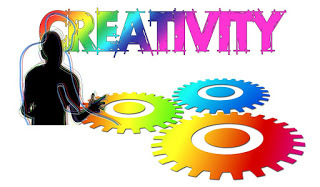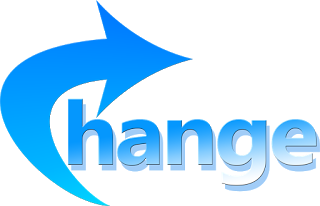Pearl Zhu's Blog, page 1297
September 14, 2016
The CIO’s Digital Agenda: IT Metrics Selection and Performance Management Sep. 2016
 IT is the foundation of data, information, and modern knowledge. The biggest misnomer regarding IT is that it is "just technology." The most powerful and differentiating tool in all of the today's businesses is INFORMATION and that, is provided by IT systems. How to pick the right metrics, fine-tune your organization’s information management to get the business digital ready?
IT is the foundation of data, information, and modern knowledge. The biggest misnomer regarding IT is that it is "just technology." The most powerful and differentiating tool in all of the today's businesses is INFORMATION and that, is provided by IT systems. How to pick the right metrics, fine-tune your organization’s information management to get the business digital ready?
IT Metrics Selection and Performance Management Three Aspects in IT Metrics? "If you can't measure, you can't manage," legendary management guru Peter Drucker once asserted. He was right -- just not right enough. The fact of the matter is it's a lot easier to get metrics wrong than right, and the damage caused from getting them wrong usually exceeds the potential benefit from getting them right. This is particularly insightful to measure modern IT performance, it’s no longer a single discipline to measure efficiency anymore, how to measure IT effectiveness and business innovation effort is more crucial than ever.
How to Measure Software Quality? Software eats the world, all forward-looking organizations declare they are at information businesses, and strive for software Quality, but most of them may not know how to define Quality. As quality, especially software quality is contextual and relative, but still, there can be set of guidelines which can help the team to follow the best practices to measure software quality accordingly.
 Ten Disciplines to Measure IT Performance? At today’s rapidly changing environment, information & technology becomes a more invaluable asset for business to survive and thrive, on the other hand, many IT organizations are struggling with the image as a cost center, intend to improve reputation as a service center and value center through high IT performance. When you think of "IT performance," what comes to mind? Operational excellence such as customer satisfaction, IT effectiveness or efficiency, or strategic value such as competitive advantage, leadership edge, cultural agility. How to measure IT performance more effectively may base on the audience, the nature and size of your business, here are some new year resolutions and general evaluation and principles.
Ten Disciplines to Measure IT Performance? At today’s rapidly changing environment, information & technology becomes a more invaluable asset for business to survive and thrive, on the other hand, many IT organizations are struggling with the image as a cost center, intend to improve reputation as a service center and value center through high IT performance. When you think of "IT performance," what comes to mind? Operational excellence such as customer satisfaction, IT effectiveness or efficiency, or strategic value such as competitive advantage, leadership edge, cultural agility. How to measure IT performance more effectively may base on the audience, the nature and size of your business, here are some new year resolutions and general evaluation and principles.How to Connect the Dots between PI vs. KPI? Performance Indicators (PI) measure progress across a broad range of intended outcomes (goals, objectives, even outputs) and are used at all levels of the organization. Key Performance Indicators can be a subset of PIs, or they can roll several PIs into one (an index). KPIs are used to measure overall progress of the organization toward its mission and primary goals -- they are high-level indicators that everyone in the organization can relate to. KPIs are often used to create corporate dashboards; they can be used in PR documents and other reporting tools to present an organization's outcomes to the public.
.The KPI Promises & Pitfalls? You can only manage what you measure, defining the right set of Key Performance Indicators is important for managing project or business effectively, and measuring KPIs to keep track of progress makes a certain level of promise for success. However, there are also big pitfalls when selecting or measuring the wrong KPIs. What is a good process to determine the right KPIs, and what is the process to change it when they are no longer relevant?
The “Future of CIO” Blog has reached 1.5 million page views with 3100+ blog posting in 59+ different categories of leadership, management, strategy, digitalization, change/talent, etc. blog posting. The content richness is not for its own sake, but to convey the vision and share the wisdom. Blogging is not about writing, but about thinking and innovating the new ideas; it’s not just about WHAT to say, but about WHY to say, and HOW to say it. It reflects the color and shade of your thought patterns, and it indicates the peaks and curves of your thinking waves. Unlike pure entertainment, quality and professional content takes time for digesting, contemplation and engaging, and therefore, it takes time to attract the "hungry minds" and the "deep souls." It’s the journey to amplify diverse voices and deepen digital footprints, and it's the way to harness your innovative spirit.
Follow us at: @Pearl_Zhu
Published on September 14, 2016 23:25
Three Digital Tilts for Talent Management Innovation
The digital tilts for talent management are to build the creative and productive working environment and grow a natural affinity into a "talent.”
 People are always the most valuable asset in any business in the past, today, and future. The focal point for talent management does shift from managing people as cost & resource to asset and human capital. In essence, the business is running by people (employees) for the people (customers), and digital is the age of people. The question is how to develop, assess and motivate your people, and put the right people in the right position with the right capability to solve the right problems? There are three modern tilts for talent management and performance management innovation:
People are always the most valuable asset in any business in the past, today, and future. The focal point for talent management does shift from managing people as cost & resource to asset and human capital. In essence, the business is running by people (employees) for the people (customers), and digital is the age of people. The question is how to develop, assess and motivate your people, and put the right people in the right position with the right capability to solve the right problems? There are three modern tilts for talent management and performance management innovation:
Continuous Performance Management focusing on the FUTURE The traditional performance review in most organizations today is an annual routine which focuses on the past, with quantitative measures, or just an administrative process without clearly defined business goals and even full of internal politics. The point is, the past is over, and any forward-looking businesses need to go beyond "keep the lights on," to leverage talent management for fulfilling their visions and achieving their strategies. The performance review should focus on future with frequent interactions and evaluation of talent both qualitatively and quantitatively in a continuous way. One of the important tasks of each manager is to help each employee succeed. In most cases, that should be the overriding general goal. Evaluation is an ongoing process, ideally, it happens daily. It is not just about a performance appraisal or focusing solely on an individual. It is about optimizing an organization's most important assets, its employees and that requires many different initiatives and actions in order to build collective human capabilities. There's the process of continually aligning abilities, talents, aspirations, etc., to important work that an organization needs to be done and of providing feedback to employees on how well the organization feels they are delivering on their commitments. Talent Management includes such things as optimizing the talents of employees at all levels, building a culture that supports the objectives that the employees are to achieve, providing positive reinforcement and corrective feedback and linking both thought processes or behaviors to appropriate consequences, and aligning the organization for success.
Talent Management analytics is no longer 'nice to have,' but 'must have' practice: Information is the power nowadays, data analytics brings important indicators on how HR and organization should focus and invest in human capital and organization efforts on people. You need to make analytics as talent management routine work and spent a lot of efforts. So related technology development and investment are necessary to improve the analytics efficiency. Keep in mind, though, humans are a complex asset, you need to understand them as a WHOLE person, not just the pieces of data. Hence, avoid those analytical pitfalls, focus on talent empowerment, not just “data boom”: ”Measure everything," companies run the risk of demotivating their employees. Taken to an extreme, analytics can dehumanize the workplace and cause top performers to grow weary of the need to conform to the myriad new standard. The goal of talent analytics is to discover talent strength, develop talent ability via a data-based, tailored approach. There's a thorny journey on transferring the value of talent analytics to the organizational success ultimately.
 Integrating the “heart “ and “mind” part of Performance Management, Talent Management, and Culture Management: A manager is involved with his/her people and is there to teach, advise, listen, correct, reward, motivate, and discipline, to make things change for the better. This is the essential of Performance Management. A change in focus from evaluating the individual to partnering with the employee, evaluate the quality of the interactions the employee has started with the manager and employee. When you lead a business or an organization, you really need to be passionate about what you are trying to achieve for the customer and long term prosperity of your organization. You then need to be able to convey this vision to your people and show cognitive understanding for both the customer and your people - this is the 'heart part.' The 'mind' part is then all about: objectives, goals, the alignment of the business strategic goal and the employee’s career goals, talking to people, empathy, appreciation, and encouragement. Performance Management is more as planning than tools.Performance Management gets "stuck" when the people in charge get "stuck." Performance Management uses performance evaluation as the main tool, it will not be of much value. The digital people management need to integrate talent management, performance management, and culture management as a holistic people-centric management discipline.
Integrating the “heart “ and “mind” part of Performance Management, Talent Management, and Culture Management: A manager is involved with his/her people and is there to teach, advise, listen, correct, reward, motivate, and discipline, to make things change for the better. This is the essential of Performance Management. A change in focus from evaluating the individual to partnering with the employee, evaluate the quality of the interactions the employee has started with the manager and employee. When you lead a business or an organization, you really need to be passionate about what you are trying to achieve for the customer and long term prosperity of your organization. You then need to be able to convey this vision to your people and show cognitive understanding for both the customer and your people - this is the 'heart part.' The 'mind' part is then all about: objectives, goals, the alignment of the business strategic goal and the employee’s career goals, talking to people, empathy, appreciation, and encouragement. Performance Management is more as planning than tools.Performance Management gets "stuck" when the people in charge get "stuck." Performance Management uses performance evaluation as the main tool, it will not be of much value. The digital people management need to integrate talent management, performance management, and culture management as a holistic people-centric management discipline.
The digital tilts for innovating talent management are to build the creative and productive working environment to grow a natural affinity into a "talent,”“ believe in "building talent" where it would otherwise be underutilized or dormant. Just like gardeners to grow the plants, talent/staff managers have to know their employees so well, watering and fertilizing in a different way, some blossom fast, others take the time to get matured. Treat people as the human capital to invest in, remove barriers to unleash their potential, communicate what's needed, get information from, and give to employees that is essential for improving their engagement and performance. The human capital management approach provides the definition of expectations in a quantitative as well as qualitative way, empower employees, encourages motivation & innovation and rewards the employees for effort above and beyond the normal expectations, to reach both their career goals and the companies' strategic goals for running a high performance business.Follow us at: @Pearl_Zhu
 People are always the most valuable asset in any business in the past, today, and future. The focal point for talent management does shift from managing people as cost & resource to asset and human capital. In essence, the business is running by people (employees) for the people (customers), and digital is the age of people. The question is how to develop, assess and motivate your people, and put the right people in the right position with the right capability to solve the right problems? There are three modern tilts for talent management and performance management innovation:
People are always the most valuable asset in any business in the past, today, and future. The focal point for talent management does shift from managing people as cost & resource to asset and human capital. In essence, the business is running by people (employees) for the people (customers), and digital is the age of people. The question is how to develop, assess and motivate your people, and put the right people in the right position with the right capability to solve the right problems? There are three modern tilts for talent management and performance management innovation:
Continuous Performance Management focusing on the FUTURE The traditional performance review in most organizations today is an annual routine which focuses on the past, with quantitative measures, or just an administrative process without clearly defined business goals and even full of internal politics. The point is, the past is over, and any forward-looking businesses need to go beyond "keep the lights on," to leverage talent management for fulfilling their visions and achieving their strategies. The performance review should focus on future with frequent interactions and evaluation of talent both qualitatively and quantitatively in a continuous way. One of the important tasks of each manager is to help each employee succeed. In most cases, that should be the overriding general goal. Evaluation is an ongoing process, ideally, it happens daily. It is not just about a performance appraisal or focusing solely on an individual. It is about optimizing an organization's most important assets, its employees and that requires many different initiatives and actions in order to build collective human capabilities. There's the process of continually aligning abilities, talents, aspirations, etc., to important work that an organization needs to be done and of providing feedback to employees on how well the organization feels they are delivering on their commitments. Talent Management includes such things as optimizing the talents of employees at all levels, building a culture that supports the objectives that the employees are to achieve, providing positive reinforcement and corrective feedback and linking both thought processes or behaviors to appropriate consequences, and aligning the organization for success.
Talent Management analytics is no longer 'nice to have,' but 'must have' practice: Information is the power nowadays, data analytics brings important indicators on how HR and organization should focus and invest in human capital and organization efforts on people. You need to make analytics as talent management routine work and spent a lot of efforts. So related technology development and investment are necessary to improve the analytics efficiency. Keep in mind, though, humans are a complex asset, you need to understand them as a WHOLE person, not just the pieces of data. Hence, avoid those analytical pitfalls, focus on talent empowerment, not just “data boom”: ”Measure everything," companies run the risk of demotivating their employees. Taken to an extreme, analytics can dehumanize the workplace and cause top performers to grow weary of the need to conform to the myriad new standard. The goal of talent analytics is to discover talent strength, develop talent ability via a data-based, tailored approach. There's a thorny journey on transferring the value of talent analytics to the organizational success ultimately.
 Integrating the “heart “ and “mind” part of Performance Management, Talent Management, and Culture Management: A manager is involved with his/her people and is there to teach, advise, listen, correct, reward, motivate, and discipline, to make things change for the better. This is the essential of Performance Management. A change in focus from evaluating the individual to partnering with the employee, evaluate the quality of the interactions the employee has started with the manager and employee. When you lead a business or an organization, you really need to be passionate about what you are trying to achieve for the customer and long term prosperity of your organization. You then need to be able to convey this vision to your people and show cognitive understanding for both the customer and your people - this is the 'heart part.' The 'mind' part is then all about: objectives, goals, the alignment of the business strategic goal and the employee’s career goals, talking to people, empathy, appreciation, and encouragement. Performance Management is more as planning than tools.Performance Management gets "stuck" when the people in charge get "stuck." Performance Management uses performance evaluation as the main tool, it will not be of much value. The digital people management need to integrate talent management, performance management, and culture management as a holistic people-centric management discipline.
Integrating the “heart “ and “mind” part of Performance Management, Talent Management, and Culture Management: A manager is involved with his/her people and is there to teach, advise, listen, correct, reward, motivate, and discipline, to make things change for the better. This is the essential of Performance Management. A change in focus from evaluating the individual to partnering with the employee, evaluate the quality of the interactions the employee has started with the manager and employee. When you lead a business or an organization, you really need to be passionate about what you are trying to achieve for the customer and long term prosperity of your organization. You then need to be able to convey this vision to your people and show cognitive understanding for both the customer and your people - this is the 'heart part.' The 'mind' part is then all about: objectives, goals, the alignment of the business strategic goal and the employee’s career goals, talking to people, empathy, appreciation, and encouragement. Performance Management is more as planning than tools.Performance Management gets "stuck" when the people in charge get "stuck." Performance Management uses performance evaluation as the main tool, it will not be of much value. The digital people management need to integrate talent management, performance management, and culture management as a holistic people-centric management discipline.The digital tilts for innovating talent management are to build the creative and productive working environment to grow a natural affinity into a "talent,”“ believe in "building talent" where it would otherwise be underutilized or dormant. Just like gardeners to grow the plants, talent/staff managers have to know their employees so well, watering and fertilizing in a different way, some blossom fast, others take the time to get matured. Treat people as the human capital to invest in, remove barriers to unleash their potential, communicate what's needed, get information from, and give to employees that is essential for improving their engagement and performance. The human capital management approach provides the definition of expectations in a quantitative as well as qualitative way, empower employees, encourages motivation & innovation and rewards the employees for effort above and beyond the normal expectations, to reach both their career goals and the companies' strategic goals for running a high performance business.Follow us at: @Pearl_Zhu
Published on September 14, 2016 23:20
Three Modern Tilts for Talent Management Innovation
 People are always the most valuable asset in any business before, today, and future. The focal point for talent management does shift from managing people as cost & resource to asset and human capital. In essence, the business is running by people (employees) for the people, and digital is the age of people. And there are three modern tilts for talent management and performance management innovation:
People are always the most valuable asset in any business before, today, and future. The focal point for talent management does shift from managing people as cost & resource to asset and human capital. In essence, the business is running by people (employees) for the people, and digital is the age of people. And there are three modern tilts for talent management and performance management innovation:
Continuous Performance Management focusing on the future: The traditional performance review is an annual event which focuses on the past with quantitative measures. However, the past is over. The performance review should focus on future with frequent interactions and evaluate talent both qualitatively and quantitatively in a continuous way. One of the important tasks of each manager is to help each employee succeed. In most cases, that should be the overriding general goal. Evaluation is an ongoing process, ideally, it happens daily. It is not just about a performance appraisal or focusing solely on an individual. It is about optimizing an organization's most important assets, its employees and that requires many different initiatives and actions. There's the process of continually aligning abilities, talents, aspirations, etc., to important work that an organization needs to be done and of providing feedback to employees on how well the organization feels they are delivering on their commitments. Talent Management includes such things as optimizing the talents of employees at all levels, building a culture that supports the objectives that the employees are to achieve, providing positive reinforcement and corrective feedback and linking behaviors to appropriate consequences, and aligning the organization for success.
Talent Management analytics is no longer 'nice to have,' but 'must have' practices: Information is the power nowadays, the analytics brings important indicators on how HR and organization should focus and invest in human capital and organization efforts on people. You need to make analytics as talent management routine work and spent a lot of efforts. So related technology development and investment are necessary to improve the analytics efficiency. Humans are a complex asset, you need to understand them as a WHOLE person, not just the pieces of data. Hence, avoid those analytical pitfalls, focus on talent empowerment, not just “data boom.” ”Measure everything," companies run the risk of demotivating their employees. Taken to an extreme, analytics can dehumanize the workplace and cause top performers to grow weary of the need to conform to the myriad new standard. So there's still a journey on transferring the value of talent analytics to the organizational success ultimately.
 Integrating the “heart “ and “mind” part of Performance Management: A change in focus from evaluating the individual to partnering with the employee to evaluate the quality of the interactions the employee has started with the manager and employee. When you lead a business or an organization, you really need to be passionate about what you are trying to achieve for the customer and long term prosperity of your organization. You then need to be able to convey this passion to your people and show passion for both the customer and your people - this is the 'heart part.' The ' mind' part is then all about: objectives, goals, the alignment of the business strategic goal and the employee’s career goals, talking to people, empathy, appreciation, and encouragement. Relationships become stuck when the passion fades away. Performance Management is more as planning than tools. A manager is involved with his/her people and is there to teach, advise, listen, correct, reward, motivate, and discipline, to make things change for the better. This is Performance Management. Performance Management gets "stuck" when the people in charge get "stuck." Performance Management uses performance evaluation as the main tool, it will not be of much value.
Integrating the “heart “ and “mind” part of Performance Management: A change in focus from evaluating the individual to partnering with the employee to evaluate the quality of the interactions the employee has started with the manager and employee. When you lead a business or an organization, you really need to be passionate about what you are trying to achieve for the customer and long term prosperity of your organization. You then need to be able to convey this passion to your people and show passion for both the customer and your people - this is the 'heart part.' The ' mind' part is then all about: objectives, goals, the alignment of the business strategic goal and the employee’s career goals, talking to people, empathy, appreciation, and encouragement. Relationships become stuck when the passion fades away. Performance Management is more as planning than tools. A manager is involved with his/her people and is there to teach, advise, listen, correct, reward, motivate, and discipline, to make things change for the better. This is Performance Management. Performance Management gets "stuck" when the people in charge get "stuck." Performance Management uses performance evaluation as the main tool, it will not be of much value.
The purpose of those modern tilts for digitizing and innovating talent management is to create the right environment to grow a natural affinity into a "talent,”“ believe in "building talent" where it would otherwise be underutilized or dormant. Just like gardeners to grow the plants, talent/staff managers have to know their employees so well, watering and fertilizing in a different way, some blossom fast, others take the time to get matured. Treat people as human capital to invest in, remove barriers to high performance, fertilize the environment to unleash their potential, communicate what's needed, get information from, and give to employees that is essential for improving their performance. The human capital management approach provides the definition of expectations in a quantitative way, empowers the employee, encourages motivation & innovation and rewards the employee for effort above and beyond the normal expectations
Follow us at: @Pearl_Zhu
Published on September 14, 2016 23:20
Three Barriers Stop Businesses & IT from Reaching Digital Premium
It is worth the effort to break down silos, get out of comfort zone, prepare the future proactively, in order for individuals and businesses to reach digital premium and maturity.

Many organizations are on the journey of digital transformation, but it is the path not being fully discovered and explored yet, there are many roadblocks and hidden barriers on the way. There are also both pains and gains to bridge businesses and our society from the industrial age with knowledge scarcity and change inertia to the digital era with information abundance and innovation flow. There is still a long way to go from the classic flavor of industrial management approaches to the dynamic style of digital leadership practices. Here are three barriers on the way to stop IT or the business as a whole from reaching high mature digital premium.
Silo: The majority of organizations in the industrial age apply reductionist management style to operate the business with functional silos, with the goals to improve the certain level of efficiency. However, silos don't seem to fit within emerging 'networked,' and highly collaborative digital organizational forms, because the increasing speed of change requires frequent cross-functional communication and collaboration. Yet many business managers still apply old silo management mindsets to run always-on and always-connected businesses. The result is about the higher risk of conflict and inertia, not something the organization wants in a global business environment that demands innovation, speed, responsiveness and flexibility to succeed. The digital shift has come to a change in organizational forms away from the traditional rigid hierarchies managed through command and control styles to more fluid and responsive network forms. To improve decision effectiveness and digital fluidity, it’s important to build a high level of trust within the upper rankings of management, share the same vision, set the strategic goals, being able to coordinate and communicate effectively across departments, and manage business performance to ensure the organization as a whole is more superior to the sum of pieces. From IT management perspective, it’s critical to breakdown silos, bridge the gaps, and fix dysfunctional roles and relationships between business and IT, in order for the business as a whole to reach digital premium.
Complacency: To reach digital premium, complacency is probably the biggest challenge either individuals or organizations have to overcome. Because organizations and individuals that are complacent do not look for new opportunities or hazards. Some say it is not complacency that is at the heart of the resistance. It is the unknown and being afraid of new things and it will be the same for the word "complacency." A complacency mind gets use to reacting, not being proactive. If you stick to the comfort zone too long, you might lose the “mojo” to move forward. The point is when complacency sprouts up, people with such mindset stop flowing their energy up towards the positive directions (learning new things, building new capabilities, exploring new opportunities, etc), and then, their energy more often flows down to the negative or unprofessional direction. Often it also becomes the root cause of the culture of mediocrity. Numerous changes or business transformations run, complete, and then slowly crumble away as people slowly revert to old ways of doing things, while few creative teams build phenomenal long-lived transformations and make the difference. Once that complacency barrier is broken, a positive change process can commence. From IT management perspective, the proactive IT should look forward, focus on the way ahead via calculating the potential value of IT with a normal/best/worst case scenario in the future with near/mid/ long term goals and creates a multidimensional map on how to get out of comfort zone fearlessly and achieve the high level digital premium.
 Ignorance: Digital is full of uncertainty, velocity, complexity and ambiguity. There is no prescribed change formula, or one size fits all change scenario. Ignorance of unknown is another pitfall which could fail change or transformation effort. Businesses are different, people are different, the very goal behind each change initiative is also different. Therefore, you have to be humble to realize there are many things you know you don’t know and perhaps even more which you don't know what you don't know. But it doesn’t mean you should just ignore the unknown, the positive leadership approach is to analyze circumstance objectively and even predict the future with a certain degree of accuracy, to prepare the “VUCA” new normal wisely. Ignore the trivial, but pay more attention to the significant details. Change is the team effort, encourage all employees to provide feedback, ask questions, and participate change proactively, to expand their view of the business and gain a holistic understanding of changes. Until that happens, you will continue on the lives in blindness.
Ignorance: Digital is full of uncertainty, velocity, complexity and ambiguity. There is no prescribed change formula, or one size fits all change scenario. Ignorance of unknown is another pitfall which could fail change or transformation effort. Businesses are different, people are different, the very goal behind each change initiative is also different. Therefore, you have to be humble to realize there are many things you know you don’t know and perhaps even more which you don't know what you don't know. But it doesn’t mean you should just ignore the unknown, the positive leadership approach is to analyze circumstance objectively and even predict the future with a certain degree of accuracy, to prepare the “VUCA” new normal wisely. Ignore the trivial, but pay more attention to the significant details. Change is the team effort, encourage all employees to provide feedback, ask questions, and participate change proactively, to expand their view of the business and gain a holistic understanding of changes. Until that happens, you will continue on the lives in blindness.
Digital premium means a lot, such as business effectiveness, agility, innovation, intelligence and people-centricity. organizations which operate this way have happy staff and customers, superior business capabilities, strong balance sheet, and positive social influence upon the environment. Therefore, it is worth the effort to break down silos, get out of comfort zone, prepare the future proactively, in order to transform the organization in a holistic way.Follow us at: @Pearl_Zhu

Many organizations are on the journey of digital transformation, but it is the path not being fully discovered and explored yet, there are many roadblocks and hidden barriers on the way. There are also both pains and gains to bridge businesses and our society from the industrial age with knowledge scarcity and change inertia to the digital era with information abundance and innovation flow. There is still a long way to go from the classic flavor of industrial management approaches to the dynamic style of digital leadership practices. Here are three barriers on the way to stop IT or the business as a whole from reaching high mature digital premium.
Silo: The majority of organizations in the industrial age apply reductionist management style to operate the business with functional silos, with the goals to improve the certain level of efficiency. However, silos don't seem to fit within emerging 'networked,' and highly collaborative digital organizational forms, because the increasing speed of change requires frequent cross-functional communication and collaboration. Yet many business managers still apply old silo management mindsets to run always-on and always-connected businesses. The result is about the higher risk of conflict and inertia, not something the organization wants in a global business environment that demands innovation, speed, responsiveness and flexibility to succeed. The digital shift has come to a change in organizational forms away from the traditional rigid hierarchies managed through command and control styles to more fluid and responsive network forms. To improve decision effectiveness and digital fluidity, it’s important to build a high level of trust within the upper rankings of management, share the same vision, set the strategic goals, being able to coordinate and communicate effectively across departments, and manage business performance to ensure the organization as a whole is more superior to the sum of pieces. From IT management perspective, it’s critical to breakdown silos, bridge the gaps, and fix dysfunctional roles and relationships between business and IT, in order for the business as a whole to reach digital premium.
Complacency: To reach digital premium, complacency is probably the biggest challenge either individuals or organizations have to overcome. Because organizations and individuals that are complacent do not look for new opportunities or hazards. Some say it is not complacency that is at the heart of the resistance. It is the unknown and being afraid of new things and it will be the same for the word "complacency." A complacency mind gets use to reacting, not being proactive. If you stick to the comfort zone too long, you might lose the “mojo” to move forward. The point is when complacency sprouts up, people with such mindset stop flowing their energy up towards the positive directions (learning new things, building new capabilities, exploring new opportunities, etc), and then, their energy more often flows down to the negative or unprofessional direction. Often it also becomes the root cause of the culture of mediocrity. Numerous changes or business transformations run, complete, and then slowly crumble away as people slowly revert to old ways of doing things, while few creative teams build phenomenal long-lived transformations and make the difference. Once that complacency barrier is broken, a positive change process can commence. From IT management perspective, the proactive IT should look forward, focus on the way ahead via calculating the potential value of IT with a normal/best/worst case scenario in the future with near/mid/ long term goals and creates a multidimensional map on how to get out of comfort zone fearlessly and achieve the high level digital premium.
 Ignorance: Digital is full of uncertainty, velocity, complexity and ambiguity. There is no prescribed change formula, or one size fits all change scenario. Ignorance of unknown is another pitfall which could fail change or transformation effort. Businesses are different, people are different, the very goal behind each change initiative is also different. Therefore, you have to be humble to realize there are many things you know you don’t know and perhaps even more which you don't know what you don't know. But it doesn’t mean you should just ignore the unknown, the positive leadership approach is to analyze circumstance objectively and even predict the future with a certain degree of accuracy, to prepare the “VUCA” new normal wisely. Ignore the trivial, but pay more attention to the significant details. Change is the team effort, encourage all employees to provide feedback, ask questions, and participate change proactively, to expand their view of the business and gain a holistic understanding of changes. Until that happens, you will continue on the lives in blindness.
Ignorance: Digital is full of uncertainty, velocity, complexity and ambiguity. There is no prescribed change formula, or one size fits all change scenario. Ignorance of unknown is another pitfall which could fail change or transformation effort. Businesses are different, people are different, the very goal behind each change initiative is also different. Therefore, you have to be humble to realize there are many things you know you don’t know and perhaps even more which you don't know what you don't know. But it doesn’t mean you should just ignore the unknown, the positive leadership approach is to analyze circumstance objectively and even predict the future with a certain degree of accuracy, to prepare the “VUCA” new normal wisely. Ignore the trivial, but pay more attention to the significant details. Change is the team effort, encourage all employees to provide feedback, ask questions, and participate change proactively, to expand their view of the business and gain a holistic understanding of changes. Until that happens, you will continue on the lives in blindness.Digital premium means a lot, such as business effectiveness, agility, innovation, intelligence and people-centricity. organizations which operate this way have happy staff and customers, superior business capabilities, strong balance sheet, and positive social influence upon the environment. Therefore, it is worth the effort to break down silos, get out of comfort zone, prepare the future proactively, in order to transform the organization in a holistic way.Follow us at: @Pearl_Zhu
Published on September 14, 2016 23:17
Three Barriers Stop IT from Reaching Digital Premium
 Many organizations are on the journey of digital transformation, but it is the path not being fully discovered and explored yet and there are still many roadblocks and hidden barriers on the way. There are both pains and gains to transform from the industrial age with knowledge scarcity to the digital era with information abundance, and there is still a long way to go from the classic industrial management flavor to the dynamic digital leadership style. Here are three barriers stop IT from reaching digital premium.
Many organizations are on the journey of digital transformation, but it is the path not being fully discovered and explored yet and there are still many roadblocks and hidden barriers on the way. There are both pains and gains to transform from the industrial age with knowledge scarcity to the digital era with information abundance, and there is still a long way to go from the classic industrial management flavor to the dynamic digital leadership style. Here are three barriers stop IT from reaching digital premium.
Silo: The majority of organizations in the industrial age apply reductionist management style to operate the business with functional silos to improve the certain level of efficiency. However, silos don't seem to fit within emerging 'networked' collaborative digital organizational forms with increasing speed of change which requires frequent cross-functional communication and collaboration. Yet many business managers still apply old silo management mindsets to new ways of running always-on and always-connected businesses. The result is about the higher risk of conflict and inertia, not something the organization wants in a global business environment that demands innovation, speed, responsiveness and flexibility to succeed. The digital shift has come to a change in organizational forms away from the traditional rigid hierarchies managed through command and control to more fluid and responsive network forms. To improve decision effectiveness and digital fluidity, it’s important to build a high level of trust within the upper rankings of management, share the same vision, set the strategic goals, being able to coordinate and communicate effectively across departments, and manage business performance to ensure the organization as a whole is more superior to the sum of pieces. From IT management perspective, it’s critical to breakdown silos, bridge the gaps, and fix dysfunctional roles and relationships between business and IT, in order for the business as a whole to reach digital premium.
Complacency: To reach digital premium, complacency is probably the biggest challenge either individuals or organizations have to overcome. Because Organizations and individuals that are complacent do not look for new opportunities or hazards. Some say it is not complacency that is at the heart of the resistance. It is the unknown and being afraid of new things and it will be the same for the word "complacency." A complacency mind gets use to reacting, not being proactive. If you stick to the comfort zone too long, you might lose the “mojo” to move forward. The point is when complacency sprouts up, people with such mindset stop flowing their energy up towards the positive directions (learning new things, building new capabilities, exploring new opportunities), then, their energy more often flows down to the negative or unprofessional direction. And it also becomes the root cause of the culture of mediocrity. Numerous changes or business transformations run, complete, and then slowly crumble away as people slowly revert to old ways, while few creative teams build phenomenal long-lived transformations and make the difference. Once that barrier is broken, a positive change process can commence. From IT management perspective, the proactive IT should look forward, focus on the way ahead via calculating the potential value of IT with a Normal/Best/Worst scenario in the future with Near/Mid/ Long term and creates a multidimensional map on how to always get out of comfort zone and achieve digital premium.
 Ignorance: Digital is full of uncertainty, velocity, complexity and ambiguity. There is no prescribed change formula, or one size fits all change scenario. Ignorance of unknown is another pitfall which could fail change or transformation effort. Businesses are different, people are different, the very goal behind each change initiative is also different. Therefore, you have to be humble to realize there are many things you know you don’t know and perhaps even more which you don't know what you don't know. But it doesn’t mean you should just ignore the unknown, the positive leadership approach is to analyze circumstance objectively and even predict the future with a certain degree of accuracy, to prepare the “VUCA” new normal wisely. Ignore the trivial, but pay more attention to the significant details. Change is the team effort, encourage all employees to provide feedback, ask questions, and participate change proactively, to expand their view of the business and gain a holistic understanding of changes. Until that happens, you will continue on the lives in blindness.
Ignorance: Digital is full of uncertainty, velocity, complexity and ambiguity. There is no prescribed change formula, or one size fits all change scenario. Ignorance of unknown is another pitfall which could fail change or transformation effort. Businesses are different, people are different, the very goal behind each change initiative is also different. Therefore, you have to be humble to realize there are many things you know you don’t know and perhaps even more which you don't know what you don't know. But it doesn’t mean you should just ignore the unknown, the positive leadership approach is to analyze circumstance objectively and even predict the future with a certain degree of accuracy, to prepare the “VUCA” new normal wisely. Ignore the trivial, but pay more attention to the significant details. Change is the team effort, encourage all employees to provide feedback, ask questions, and participate change proactively, to expand their view of the business and gain a holistic understanding of changes. Until that happens, you will continue on the lives in blindness.Digital premium means a lot, such as business effectiveness, agility, innovation, intelligence and people-centricity. organizations which operate this way have happy staff and customers, superior business capabilities, strong balance sheet, and positive social influence upon the environment. Therefore, it is worth the effort to break down silos, get out of comfort zone, prepare the future proactively, in order to transform the organization in a holistic way.Follow us at: @Pearl_Zhu
Published on September 14, 2016 23:17
September 13, 2016
The CIO’s Digital Agenda: Running IT with Full Speed to Accelerate Digital Transformation Sep. 2016
 IT is the foundation of data, information, and modern knowledge. The biggest misnomer regarding IT is that it is "just technology." Digital is about the rapidly change and continuous business flow, and IT becomes a changing organization to driving business transformation. How to fine tune IT to become a change agent and get the business digital ready?
IT is the foundation of data, information, and modern knowledge. The biggest misnomer regarding IT is that it is "just technology." Digital is about the rapidly change and continuous business flow, and IT becomes a changing organization to driving business transformation. How to fine tune IT to become a change agent and get the business digital ready?
Running High-Speed IT to Accelerate Digital TransformationReinvent IT as a Business Accelerator? Most of IT organizations today are still being portrayed as the back-office cost center, to reimagine IT, it needs to shift from “T” driven to “I” - information focused business engine. Information is growing exponentially and it is humanly impossible to explore all of the "art" out there around a subject. In a business scope, there are some of the important bits and bytes of information needed when evaluating a new market, new technology or any business growth opportunity. Therefore, IT becomes more critical to explore such an “art of impossible,” but how to accelerate idea validation, doing more with innovation and build a unique set of business capabilities from IT management perspective?
Making a Leap in IT Digital Transformation: More and more IT organizations are transforming from back end internal support functions into front office revenue generators, from reactive order takers to proactive changing organizations; from "doing more with less" to "doing more with innovation," and from IT-business alignment to IT-business engagement. They help their companies achieve strategic business goals and objectives in any way possible. To put simply, it is reaching the inflection point for many forward-thinking organizations for IT to make a leap in digital transformation?
 Three Core Principles in Accelerating Digital Innovation? Innovation is the specific phenomenon of the knowledge-based economy. It is about having new knowledge and new processes. It is also about too much knowledge in terms of too many good creative ideas, and too little available resources. Innovation is about prioritization as well - via a systematic discipline that can "smell" the right idea at the right time and place, make it tangible, and achieve its business values.
Three Core Principles in Accelerating Digital Innovation? Innovation is the specific phenomenon of the knowledge-based economy. It is about having new knowledge and new processes. It is also about too much knowledge in terms of too many good creative ideas, and too little available resources. Innovation is about prioritization as well - via a systematic discipline that can "smell" the right idea at the right time and place, make it tangible, and achieve its business values.Running IT on the Fast Lane? Nowadays information is the lifeblood of the business technology is often the digital disruptor, and change is the very nature of Information Technology. The irony fact is that IT is often perceived to be too slow to adapt to the changes in the majority of large enterprise organizations, and some businesses even complain their IT organizations become the obstacle to getting things done. How to speed up IT- it means IT has to adapt to changes in proactive ways, and more often, IT has to drive the changes and plays a pivotal role in digital transformation, focus on the fastest speed available - because that is where the main threat to competitiveness. It is about running IT as a business enabler to catalyze growth and improve organizational agility. In practice, how to run IT on the fast lane.
How Responsive Could Digital IT Be? Digital is all about change with continuous disruptions and exponential information flow, a responsive IT means a lot of things for the business’s digital transformation: speed, innovation, agility, ambidexterity, modernization, intelligence, value creation, and maturity, etc. How responsive could IT be in order to ride learning curves, keep the pace of rapid changes, and accelerate digital transformation of the business.
The “Future of CIO” Blog has reached 1.5 million page views with 3000+ blog posting in 59+ different categories of leadership, management, strategy, digitalization, change/talent, etc. blog posting. The content richness is not for its own sake, but to convey the vision and share the wisdom. Blogging is not about writing, but about thinking and innovating the new ideas; it’s not just about WHAT to say, but about WHY to say, and HOW to say it. It reflects the color and shade of your thought patterns, and it indicates the peaks and curves of your thinking waves. Unlike pure entertainment, quality and professional content takes time for digesting, contemplation and engaging, and therefore, it takes time to attract the "hungry minds" and the "deep souls." It’s the journey to amplify diverse voices and deepen digital footprints, and it's the way to harness your innovative spirit.
Follow us at: @Pearl_Zhu
Published on September 13, 2016 23:16
Three Principles in Building a Creative Digital Workplace
 Digital is the age of people, and it is also opening the new chapter of innovation. Digital workplaces are about building an environment with the abundance of information and the culture of innovation, to put people at the center of business, and to both engage employees and delight customers. How can digital leaders set principles to encourage creativity and building a creative digital workplace?
Digital is the age of people, and it is also opening the new chapter of innovation. Digital workplaces are about building an environment with the abundance of information and the culture of innovation, to put people at the center of business, and to both engage employees and delight customers. How can digital leaders set principles to encourage creativity and building a creative digital workplace?
Encourage curiosity and build digital mindset: Creativity is an innate ability to create novel ideas. Creativity in the workplace is fundamentally about the mental production of new ideas, not just any new ideas, but the creation of ideas that are both original and valuable. Everyone has the ability to create, but creativity is an inherent ability that cannot be taught, only developed. As businesses get more cut-throat in the hyper-connected working environment, this puts stress on the labor force that is not conducive to more creative and experimental thinking. But if you wanna to make a "creative culture," and build long term business competency, you have to build a creative workplace which evokes the endless curiosity of its people and encourages the growth mindset for catalyzing changes. More specifically, a creative digital workplace will: - Provide intellectual challenge and help people make progress. -A place to strengthen their strength and expand their knowledge -A Change to apply their ideas and recognition for their ideas.-A place people enjoy learning and doing, sharing insight and bring wisdom.
Encourage people to question the status quo and think independently and xreate an environment that encourages dissent and candor : Innovation is about seeing things from different angles, or solving problems in different ways. It’s about breaking down silos, and breaking through conventional wisdom. Innovation is all about how to disrupt the old thinking and old way to do the things. Innovation journey is like taking a hiking trip at the trail very few or even no people ever went before, it takes courage and emotional maturity. Innovators are disruptive to the status quo, and often they are visionary as well, it means the seemly “misfit” nature of innovators are invaluable to push the business or the world for advancement. Also working with innovative individuals who have a strong sense of self has many benefits as well, because often they are authentic with independent thinking skills with clear thought processes, no hidden agenda, say what they mean and mean what they say, to keep things simple, as simplicity is one of the innovation principles.
 Help people feel more comfortable with chaos, uncertainty, and ambiguity and develop creative capacity: Due to the “VUCA” characteristics of digital new normal, digital workplace today needs to be more dynamic and informative. The more innovative the employees is, the less tolerant of structure (policies, rules and paradigms) and less respectful of consensus one is. The workplace needs to be designed to help employees at all levels within an organization (from top leaders to front-line employees) understand and develop their creative capacity to solve problems and exploit opportunities in new and innovative ways. The emergent digital technologies and tools help to break of silo paradigms and loosening overly restricted structure, utilizes cutting-edge narrow band psychometrics to diagnose, assess and train the core factors of creativity such as, cognitive processes, personality, motivation, and confidence, and build an open, hyperconnected and highly collaborative working environment for growing innovation seeds, and harnessing innovation effectiveness.
Help people feel more comfortable with chaos, uncertainty, and ambiguity and develop creative capacity: Due to the “VUCA” characteristics of digital new normal, digital workplace today needs to be more dynamic and informative. The more innovative the employees is, the less tolerant of structure (policies, rules and paradigms) and less respectful of consensus one is. The workplace needs to be designed to help employees at all levels within an organization (from top leaders to front-line employees) understand and develop their creative capacity to solve problems and exploit opportunities in new and innovative ways. The emergent digital technologies and tools help to break of silo paradigms and loosening overly restricted structure, utilizes cutting-edge narrow band psychometrics to diagnose, assess and train the core factors of creativity such as, cognitive processes, personality, motivation, and confidence, and build an open, hyperconnected and highly collaborative working environment for growing innovation seeds, and harnessing innovation effectiveness.
Digital workplace is fluid, live, creative and productive. Organizations need to invest in the cultivation of capacity for innovation. Mutual trust, innovation leadership, and emotional maturity are all critical in building a highly effective innovation workforce and workplace and achieve an exceptional result.
Follow us at: @Pearl_Zhu
Published on September 13, 2016 23:13
The Daily Grinding of IT
 Today’s IT organization plays a significant role in digital transformation, IT needs to be strategic, innovative, forward-thinking, agile, flexible, speedy, and customer centric. However, every journey starts with the first step, the long term perspectives come with the daily grinding. Thinking big, and start small. How can IT leaders manage IT with daily best practice, to not just fixing the symptoms, but building its capabilities and make continuous delivery to achieve the strategic goals and fulfilling the business vision.
Today’s IT organization plays a significant role in digital transformation, IT needs to be strategic, innovative, forward-thinking, agile, flexible, speedy, and customer centric. However, every journey starts with the first step, the long term perspectives come with the daily grinding. Thinking big, and start small. How can IT leaders manage IT with daily best practice, to not just fixing the symptoms, but building its capabilities and make continuous delivery to achieve the strategic goals and fulfilling the business vision.
IT daily grinding needs to focus on improving operational excellence and customer satisfaction: “Keep the lights on” is still fundamental to run an efficient IT organization, IT’s daily grinding is important to continue optimizing business processes and managing IT cost. Every part of the company should do what it can to gain results while spending the least cost necessary, buy what you need, use it to the fullest, and running IT as a business, to ensure all resources, human capitals and budget are used in the best manner possible. This dimension is to create a frictionless channel for resources to flow from the top line to the bottom line. IT often suffers from overload, lack of resource, and talent shortage, and managing IT delivery including supporting process development projects in other parts of the company and sometimes no time left selling the idea about investing in their own processes. As daily practices, IT needs to be proactively planning, not justing taking order, but working closely with internal customers to improve overall business operation. IT shouldn’t always look at itself from inside out via IT lense, but via outside-in customer viewpoint, to ensure the daily task helps the business build the competency for delighting both internal and external customers, and improving agility.
Prioritization is also important for IT to take daily practices and improve information management effectiveness: There are too many things in the daily agenda of IT. Many IT leaders cite mistakes in managing the demand pipeline, either by not setting the right priorities well with the business units, or just taking on too much and crushing their team. The major contributing factors to IT overloading are “ineffective leadership,” "insufficient resources," “de-motivated teams,” and the classic “can’t say no.” Doing daily grinding doesn’t mean IT should ignore its role refining. Indeed, continuing refining its role via effective communication and cross-functional collaboration needs to be the daily practice as well. Without effective communication and prioritization skills, the business often doesn't understand how IT can help, and IT doesn't know what the business needs. The business thinks they know what they need, or the IT department thinks they know what the business need. And then the gaps between IT and business enlarged and IT perhaps just keeps “busyness,” without solving real issues. Being customer centric also doesn’t mean saying YES to every request from internal users. What the business really needs is an IT group that can say no with good reasons, and offer alternative solutions that meet the goals.
 “Doing more with innovation” should become the daily motto for IT as well: Innovation is not serendipitous, it takes daily practice to make IT “innovation fluent.” However, people often get trapped in "That's the way we've always done it mentality" and that slows progress. And many leaders who have been with the same organization and grew from IT ranks for decades, lack of “out of box” thinking. To flex their innovation muscles, they need to have daily practices, either exploring the new way to solving the old problems, or learning from other industries or companies. Innovative CIOs need to work closely with the business partners, take business problems, collect feedbacks, discover solutions for them, simplify operations and be better partners with the rest of the organizations. They should also develop strategy and practices to manage innovation in a systematic way via fine tuning both idea creation and idea management scenario, increase value propositions, and run a highly innovative IT organization.
“Doing more with innovation” should become the daily motto for IT as well: Innovation is not serendipitous, it takes daily practice to make IT “innovation fluent.” However, people often get trapped in "That's the way we've always done it mentality" and that slows progress. And many leaders who have been with the same organization and grew from IT ranks for decades, lack of “out of box” thinking. To flex their innovation muscles, they need to have daily practices, either exploring the new way to solving the old problems, or learning from other industries or companies. Innovative CIOs need to work closely with the business partners, take business problems, collect feedbacks, discover solutions for them, simplify operations and be better partners with the rest of the organizations. They should also develop strategy and practices to manage innovation in a systematic way via fine tuning both idea creation and idea management scenario, increase value propositions, and run a highly innovative IT organization.
Uncertainty and ambiguity are a key challenge for business leaders today. The daily grinding of IT means the good balance of long term perspectives and short-term goals for the business. In the past, many business leaders believed their organizations’ long-term goals could wait until they had dealt with the current crisis. In the current business environment, this is no longer the case, the rate of change is increasing, it implies that business leaders must learn how to strike a balance between managing complex issues today and predicting the uncertain issues of tomorrow. IT should focus on doing things matter today for its customers and business, also keep eyes on the horizon, not just keep hands busy, but keep it flow, to be a digital brain of the business, thinking harder and working smarter, to improve business maturity and accelerate the business’s digital transformation.
Follow us at: @Pearl_Zhu
Published on September 13, 2016 23:07
September 12, 2016
The Monthly Foresight: The Future of Organizations Sep. 2016
 The new paradigm that is emerging is one as a Living Organization and Digital Workplace, which is organic, alive, holistic, vibrant, energetic, responsive, fluid, creative and innovative, in a relationship with its environment/customers/ suppliers, and above all enhances and supports the dignity of the creative human spirit. What then are the key attributes of a talent who can do this.
The new paradigm that is emerging is one as a Living Organization and Digital Workplace, which is organic, alive, holistic, vibrant, energetic, responsive, fluid, creative and innovative, in a relationship with its environment/customers/ suppliers, and above all enhances and supports the dignity of the creative human spirit. What then are the key attributes of a talent who can do this.
How to Build an Organization of Future The future is already here, the digital is the age of customer-centricity; the age of empathy, the age of collaboration; the age of co-creating and the age of people, but either strategically or tactically, how to build such an organization of future?
Future of Work: Connect the Forward Dots Organization of the Future is an organization designed openly for anyone with ideas on how human organizations ought to be contrived in the face of the strategic imperatives of the 21st century. The work is not the place you go, but a live organization and an experiment lab you can connect the future dots. Here are five characteristics of future of work?
Business Architecture and Future of Enterprises? We all understand that the rapid changes in the marketplace and technological advances provide growth opportunities for business to thrive, but also put additional pressures on organizations to survive. So which role Business Architecture needs to play in the future of enterprises, and how Business Architecture, as a discipline, can help design and manage such future organization.
 Three Portmanteau Hybrid Words to Envision a Digital Organization Organizations large or small are on the journey to digital transformation, it is not an overnight phenomenon, but a well-planning strategy with the step-wise approach. There are physical buildings and virtual, always-on working environment; there are next innovation practices and “always do things like this” best practices; there’s abundance of information but still the scarcity of insight. It is the hybrid business world full of options. Digital is the age of alternatives, here are three portmanteau hybrid words to convey the management principles in running a digital organization?
Three Portmanteau Hybrid Words to Envision a Digital Organization Organizations large or small are on the journey to digital transformation, it is not an overnight phenomenon, but a well-planning strategy with the step-wise approach. There are physical buildings and virtual, always-on working environment; there are next innovation practices and “always do things like this” best practices; there’s abundance of information but still the scarcity of insight. It is the hybrid business world full of options. Digital is the age of alternatives, here are three portmanteau hybrid words to convey the management principles in running a digital organization?
The Future of Digital Organization Digital transformation is a journey, from digital strategy crafting to organizational structure tuning, it has to permeate into business strategy and vision, mindset, and action, culture, and communication, process and capability, etc. As we addressed in Digital Master, only less than 5% of organizations reach the highest level of digital maturity. From Organization Design (OD) perspective, what’re the characteristics of a digital organization, and how to improve its digital agility and overall maturity?
The blog is a dynamic book flowing with your thought; growing through your dedication; sharing your knowledge; conveying your wisdom, and making influence through touching the hearts and connecting the minds across the globe. The “Future of CIO” Blog has reached 1.5 million page views with about #3100 blog posting. Among 59+ different categories of leadership, management, strategy, digitalization, change/talent, etc. Blogging is not about writing, but about thinking and innovating the new ideas; it’s not just about WHAT to say, but about WHY to say, and HOW to say it. It reflects the color and shade of your thought patterns, and it indicates the peaks and curves of your thinking waves. Unlike pure entertainment, quality and professional content takes time for digesting, contemplation and engaging, and therefore, it takes the time to attract the "hungry minds" and the "deep souls." It’s the journey to amplify diverse voices and deepen digital footprints, and it's the way to harness your innovative spirit.
Follow us at: @Pearl_Zhu
Published on September 12, 2016 22:15
Twelve Change Management Insight
 Change is inevitable, organizational change has become a common practice within an organization and across the industries, but too often changes are made as a reaction to outer impulses, crisis, and demands. This is the bureaucracy’s way of meeting the challenges. What are the invaluable Management insight, the proactive and effective way to deal with changes, and how can forward-looking organizations leverage Change Management to lead a successful digital transformation?
Change is inevitable, organizational change has become a common practice within an organization and across the industries, but too often changes are made as a reaction to outer impulses, crisis, and demands. This is the bureaucracy’s way of meeting the challenges. What are the invaluable Management insight, the proactive and effective way to deal with changes, and how can forward-looking organizations leverage Change Management to lead a successful digital transformation?
Awareness is the first step, start from the mindset level. People change for a reason, it is a mind which manipulates the reasoning and logic behind the change.
Change is the vehicle, not the purpose of doing a project. It is the key to present the WHY first, focus on the business purpose behind it:
Change is neither top down or bottom up activity, it has to be orchestrated at all levels, to play a symphony with harmony.
Change Management is about mentoring the human side of the business through profound, unsettling change.
Strategy guides change and culture are the pathways for the change. Organizational Change Management capability can be built into the organizational culture.
Resistance to change is part of human nature. Most people are quite willing to put the effort in change. What they don't want is 'to be changed by others.'
Change Management can become more successful with people at the core of change, the cause of changes and the purpose of change.
Trying to fix a symptom, not the real problem is often one of the biggest pitfalls in Change Management.
To make the change as simple as possible, not simpler. Simplicity is an aspect of “appropriate” abstraction.
Creativity today ask for a new mindset, there is no reason why creativity can not or does not form part of the Change Management practices
To apply Systems Thinking principle, organization change management should ensure the business as a whole is superior to the sum of pieces.
We can only manage what we measure. Perhaps the difficulty in measuring change management is that the very thing we are measuring is changing.
Follow us at: @Pearl_Zhu
Published on September 12, 2016 22:10



